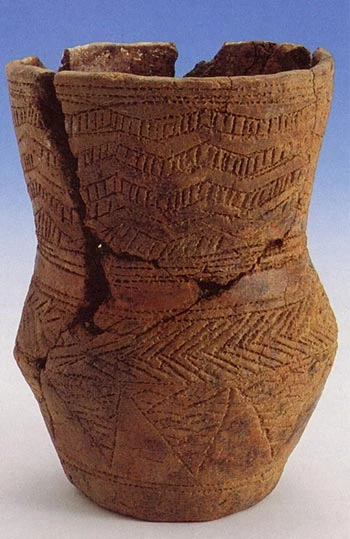The Llandaf Beaker Man - An Early Bronze Age grave at Llandaf
The Llandaff Beaker.
In 1992, renovations at a house in the Llandaf area of Cardiff uncovered an unusual stone slab buried by river sands and silts. Beneath the slab was a long bone and clay pot.
The pot turned out to be a beaker - a decorated clay vessel, fashionable in western Europe some 4,000 years ago, during what is known as 'the Beaker Period'. The beaker may originally have contained mead, beer or some other special brew. The stone slab marked the position of a grave.
With the cooperation and encouragement of the owners, the Department of Archaeology and Numismatics conducted an excavation in the driveway to their house, to re-expose the grave and fully excavate its contents. The enclosing cist, constructed of slabs of the local Radyr Stone, was unusual in that it was the form of a lean-to, its capstone resting at an angle of 30° contrasting with more conventional box-like, beaker cists.
Little of the skeleton remained. The expectation had been to find a crouched skeleton typical of the Beaker period, but only fragments of the cranium (the top of the skull) and limb bones survived. Additional grave-goods were unearthed, a bronze awl (a pointed tool for making holes, as in wood or leather) and a flint flake - objects that would have been buried alongside the person to be used in the 'next world'. Awls are usually associated with female burials.
Analysis of the sediment filling the grave may explain the unusual form of the cist and why only part of the skeleton was preserved. The presence of graded water-lain sediments within the grave suggests disturbance and erosion of the burial by flood water. Today the river Taff flows close by and property where the grave was discovered is built on the former floodplain of the river.
